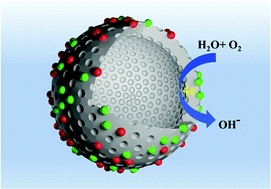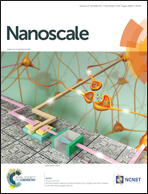Nitrogen and sulfur co-doping of 3D hollow-structured carbon spheres as an efficient and stable metal free catalyst for the oxygen reduction reaction†
Abstract
Three-dimensional, hollow-structured carbon sphere nanocomposites (N,S-hcs) doped with nitrogen and sulfur were prepared using a soft template approach followed by a high-temperature treatment. The synthesized N,S-hcs nanomaterials exhibited favourable catalytic activity for the oxygen reduction reaction (ORR) compared to carbon spheres doped solely with nitrogen (N-hcs), polypyrrole (PPY) solid nanoparticles and irregular fragments of polyaniline (PAN). These results demonstrated the co-doping of N/S and the relatively large surface area of the mesoporous carbon structure that enhanced the catalytic activity of the resulting material. Notably, the prepared N,S-hcs electrocatalysts provided four electron oxygen reduction selectivity, long-term durability and high resistance to methanol poisoning, all of which represented improvements over the conventional Pt/C electrocatalyst. The progress represented by this reported work is of great importance in the development of outstanding non-metal based electrocatalysts for the fuel cell industry.


 Please wait while we load your content...
Please wait while we load your content...